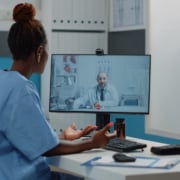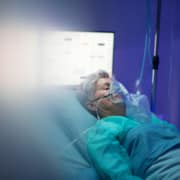Explore the benefits of tele-nursing, from virtual critical care support to improved chronic disease management, revolutionizing patient care and outcomes.
Telemed services are at the intersection of healthcare and technology, which continues to evolve at an incredible pace.
Tele ICU care presents substantial cost-saving opportunities to budget-conscious hospitals and healthcare facilities of all sizes.
ICU Telehealth services are well positioned to provide solutions for the increasing costs and complications tied to the growing medical problem of Acute Respiratory Failure (ARF) across the United States.
ICU patient monitoring is set to address ongoing labor shortages being felt by many remote and rural critical care facilities in America.
In a single academic medical center study, implementation of a teleICU intervention was associated with reduced adjusted odds of mortality and reduced hospital length of stay, as well as with changes in best practice adherence and lower rates of preventable complications
Tele-ICU improves patient safety, mortality and length of stay. This effect is enhanced by continuous and proactive monitoring over episodic involvement, frequent performance reviews as well as close integration of the tele-ICU team with existing bedside team structures. Tele-ICU with added logistics functions has the potential to optimize ICU bed utilization and enhance financial performance
A tele-intensive care unit (tele-ICU) uses telemedicine in an intensive care unit (ICU) setting, applying technology to provide care to critically ill patients by off-site clinical resources… Intensivists working these systems are able to more effectively treat ICU patients, providing better clinical outcomes for patients at lower costs compared with hospitals without a tele-ICU
…an increasing number of studies have shown that intensivist-staffed intensive care units (ICUs) lead to overall economic benefits and improved patient outcomes, including shorter length of stay and lower rates of complications and mortality… This article explores the history of intensivists and critical care, the arguments for 24/7 ICU staffing, and outcomes in various ICU settings
Tele-ICUs may serve within a hybrid model of care to support high-intensity coverage and bridge the gap for nocturnal ICU care. Tele-ICU is associated with improved ICU mortality and decreased LOS, albeit with significant heterogeneity among studies. It also has the potential for additional benefits, such as enhancing cardiovascular critical care, reducing interhospital transfers and improving staff satisfaction











